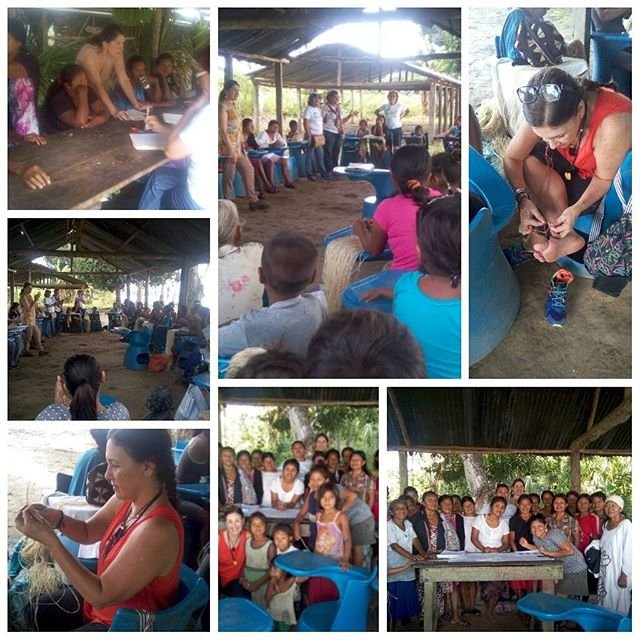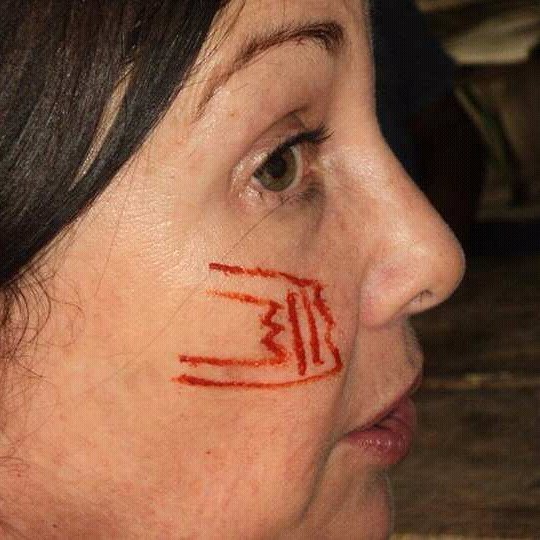
In this post I will tell you how my experience was in the Orinoco Delta, in Venezuela, I went there as a coach of a creative workshop of orality to women of Waraos Yekwana and Wayuu ethnic groups. A tasty exchange between natives and criollas through the stories of their lives and their legends. Sponsored by the Venezuelan foundation Tierra Viva, Chevron-Texaco and the European Union, I arrived at the Oropendola camp, located in Caño Bujana, in the Orinoco Delta. Through an interesting program these organizations promote the rich indigenous culture with methodologies that combine diverse participatory strategies. The commercialization of handicrafts produced by the ethnic groups directly affects their family income, contributing to the acquisition of products of first necessity. Following this axis, it is understood that their stories are patrimonial legacies that have been passed orally. With the workshop, the path was paved so that the artisans themselves would tell their experience. The main objective was fulfilled. Life stories and legends were presented as an excuse for creation given its liberating value. Through this qualitative strategy, self-knowledge was achieved and, at the same time, beautiful texts were constructed as testimonies of the broad ancestral wisdom of the primitive ethnic groups. Starting from the individual heart, the native women transmit their essence to the piece they create, without forgetting that there is an ancestral, ethnic, and national heart.
Life stories
Wayuú (town of sun, wind and sand)
Ana Luisa and Liubys Morales, Gloria Fernández and Gisela Ipuana, come from the Alta Guajira, Maracaibo and Campo Moga. They are enterprising, experts in the art of Wayúu weaving. The family of Gisela won a prize from Unesco with the Osonoshi susú (bag) in 2011. She, herself, is an agronomist graduated from University of Zulia, divorced from a Creole and with a mestizo daughter. Gloria Fernández, spent half her life under creole customs, upon entering the university she felt the need to explore her roots, obtained title and new way of life. Today, she is a social worker, also graduated from University of Zulia and lives in a Wayuú community in Maracaibo, adapting the ancestral practices to the Creole elements and vice versa. Ana Luisa and her daughter Liubys, came from the Alta Guajira, maintain a more traditional worldview, they are evangelical Christians. The story of Ana Luisa's marriage, at age fourteen, with her husband of the same age, is deeply moving. Without knowing anything about love, she learned to love him. "Daddy and Mommy are soulmates. They were born the same month, at the same time and the same year ", says her daughter.
Waraos, the oldest town in Venezuela.
Cecilia López, Ofelia Pérez, Morelia Valderrey, Edelia Cooper, Bisla and Omaira Silva, from the Guacajara de Mánamo, San José de Guacajara, Guacajarita and Santo Domingo communities, with their life stories and legends, stripped their souls, showing a way to a particular life, sometimes violent. Edelia, of very clear complexion and English last name, knows that her father arrived from Margarita, perhaps he came from some island of the English caribbean. The man assumed the Warao culture as his own. Edelia, the daughter, married at twelve. She recently widowed, her husband was killed in communal quarrels. Bisla, got tired of asking money from her partner to get underwear (does that sound familiar?). Recently she got an order, so big, that the money reached for many panties. Morelia, makes purses since she remembers, "although I never sold one." Now, the husband runs quickly to look for jau (moriche) and carapo to paint it. Her talented hands make an important contribution to the family nucleus.
Yekuana (people of the curiaras)
Dawané is the Yekwana name of Luz María. She and her mother, Carolina, who does not speak any Spanish, come from a village near the Caura River, the third largest in the country. They made our faces up, with a paste made of roots, of reddish hue, color that they carry out of the village, (when they are there they use black, or a combination of both) that took days to fall. Dawané, patiently described each drawing of my face in a cosmogonic mystical monologue. With polysemous symbols, she predicted the flow of my life.
